What Is Micromarketing? Micromarketing In A Nutshell
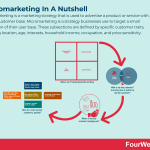

Micromarketing is a marketing strategy that is used to advertise a product or service with a narrow customer base. Micromarketing is a strategy businesses use to target a small subsection of their user base. These subsections are defined by specific customer traits, including location, age, interests, household income, occupation, and price sensitivity.
Understanding micromarketing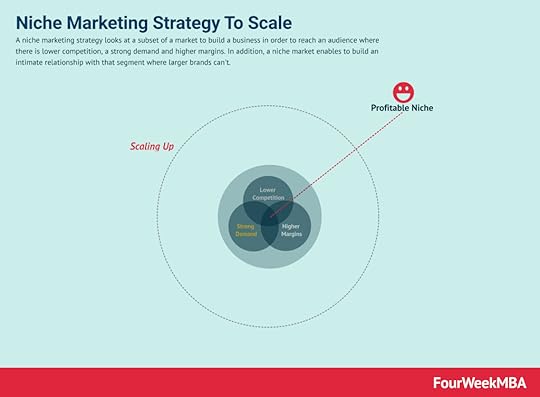
Micromarketing most often describes marketing strategies that are customized according to an individual customer, but they can also be customized to a local market or market segment. The strategy itself became popular in the 1990s as mass uptake of the personal computer made it easier for businesses to segment customers and send them information.
Micromarketing is seen as a worthwhile strategy to address the hypercompetitive nature of modern marketplaces. Indeed, consumers prefer to purchase products they feel were developed by businesses to solve specific and sometimes very personal problems.
Micromarketing examples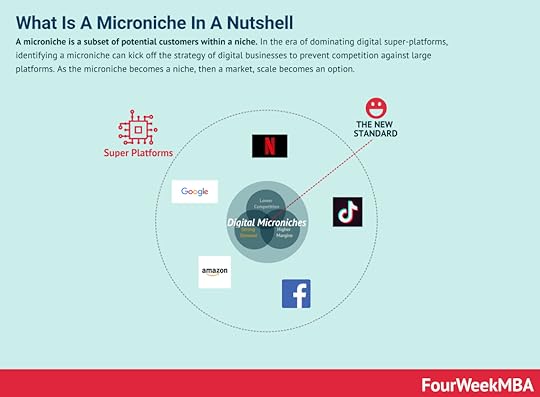 A microniche is a subset of potential customers within a niche. In the era of dominating digital super-platforms, identifying a microniche can kick off the strategy of digital businesses to prevent competition against large platforms. As the microniche becomes a niche, then a market, scale becomes an option.
A microniche is a subset of potential customers within a niche. In the era of dominating digital super-platforms, identifying a microniche can kick off the strategy of digital businesses to prevent competition against large platforms. As the microniche becomes a niche, then a market, scale becomes an option.Let’s now take a look at some micromarketing examples:
Red BullIn truth, the popular energy drink Red Bull appeals to a broad range of consumers. But the company choose to associate the beverage with extreme sports competitions where it was marketed to a specific group of young male participants in need of an energy boost.
Binaural microphones3Dio is a family-owned business that makes binaural microphones, which are microphones with a human ear molded to each side. These microphones were developed for a niche community of people who create ASMR (autonomous sensory meridian response) content on YouTube and similar platforms.
Coca-ColaNo article on micromarketing would be complete without mentioning the Share a Coke campaign. Here, the beverage giant replaced the Coca-Cola label on their 20-ounce bottles with various first names. Before developing the campaign, the company analyzed what names would sell the most according to their customer base. This personal touch became a huge success for Coca-Cola, reporting 19% year-over-year sales growth for the 20-ounce bottle the year after the campaign was launched.
Advantages and disadvantages of micromarketingThe most obvious advantage of a micromarketing strategy is that it is highly targeted. With that in mind, here are some less obvious advantages:
Reduced costsMicromarketing reduces costs because the target audience is smaller than one seen in a traditional marketing campaign.
Brand awarenessWhen a business becomes hyper-specific about the type of customer it wants to attract, there is an increased likelihood the customer will become enamored with the brand and tell their friends and family.
Less competitionMicromarketing can be used in conjunction with the long tail strategy, where retailers sell many unique items with relatively smaller quantities sold of each. These niche products tend to have less competition since most retailers prefer to sell popular, high-volume goods.
Let’s now take a look at some of the disadvantages:
Time-intensiveSelecting a narrow and defined market or audience segment requires detailed and thus time-intensive research. Marketing campaigns may also need to be developed for each segment.
Customer acquisition costsSince the segment comprises fewer people, the average cost of acquiring a new customer is higher. There is a possibility that increased customer acquisition costs negate the cost-saving from targeting a smaller audience in the first place.
Ineffective campaignsIn some cases the marketing effort may be ineffective. With such a narrow band of consumers targeted, a poorly researched campaign will not be relevant to other, more profitable segments by default.
Key takeaways:Micromarketing is a marketing strategy that is used to advertise a product or service with a narrow customer base. Micromarketing strategies are customized according to the individual customer, local market, or market segment.Micromarketing has been employed successfully by companies such as Coca-Cola, Red Bull, and 3Dio.Micromarketing reduces costs, increases brand awareness, and encourages businesses to target less competitive niche products. However, the strategy can be time-intensive and is associated with higher customer acquisition costs. The ultra-specific nature of micromarketing may also cause some businesses to target the wrong audience.Types Of Marketing Connected To Micromarketing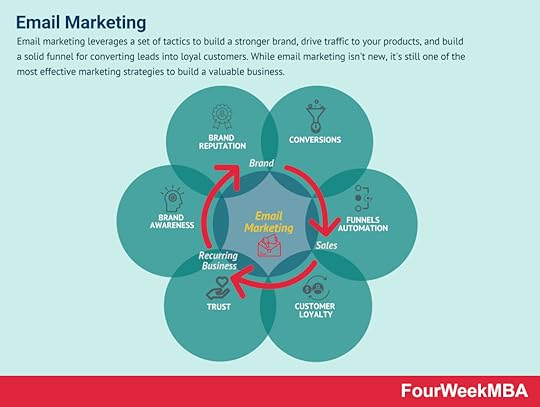 Email marketing leverages a set of tactics to build a stronger brand, drive traffic to your products, and build a solid funnel for converting leads into loyal customers. While email marketing isn’t new, it’s still one of the most effective marketing strategies to build a valuable business.
Email marketing leverages a set of tactics to build a stronger brand, drive traffic to your products, and build a solid funnel for converting leads into loyal customers. While email marketing isn’t new, it’s still one of the most effective marketing strategies to build a valuable business.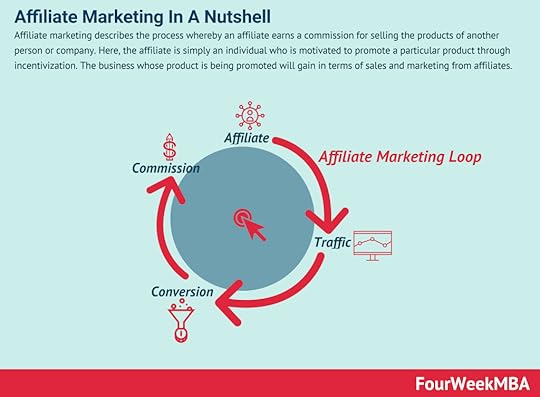 Affiliate marketing describes the process whereby an affiliate earns a commission for selling the products of another person or company. Here, the affiliate is simply an individual who is motivated to promote a particular product through incentivization. The business whose product is being promoted will gain in terms of sales and marketing from affiliates.
Affiliate marketing describes the process whereby an affiliate earns a commission for selling the products of another person or company. Here, the affiliate is simply an individual who is motivated to promote a particular product through incentivization. The business whose product is being promoted will gain in terms of sales and marketing from affiliates.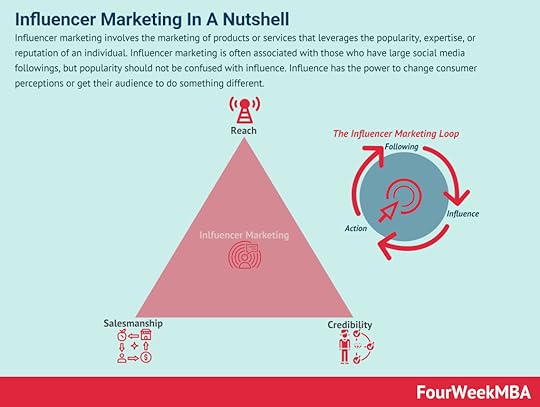 Influencer marketing involves the marketing of products or services that leverages the popularity, expertise, or reputation of an individual. Influencer marketing is often associated with those who have large social media followings, but popularity should not be confused with influence. Influence has the power to change consumer perceptions or get their audience to do something different.
Influencer marketing involves the marketing of products or services that leverages the popularity, expertise, or reputation of an individual. Influencer marketing is often associated with those who have large social media followings, but popularity should not be confused with influence. Influence has the power to change consumer perceptions or get their audience to do something different.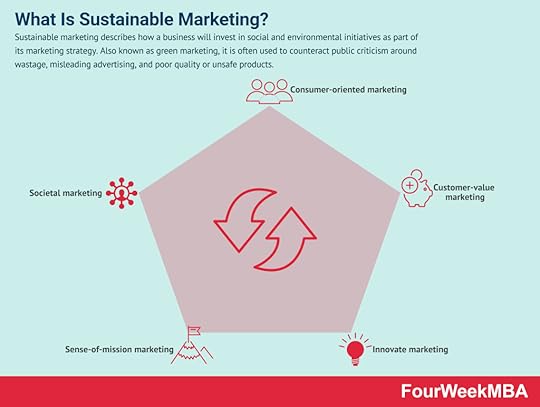 Sustainable marketing describes how a business will invest in social and environmental initiatives as part of its marketing strategy. Also known as green marketing, it is often used to counteract public criticism around wastage, misleading advertising, and poor quality or unsafe products.
Sustainable marketing describes how a business will invest in social and environmental initiatives as part of its marketing strategy. Also known as green marketing, it is often used to counteract public criticism around wastage, misleading advertising, and poor quality or unsafe products.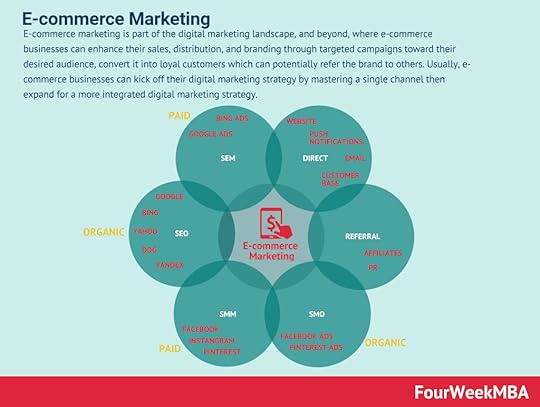 E-commerce marketing is part of the digital marketing landscape, and beyond, where e-commerce businesses can enhance their sales, distribution, and branding through targeted campaigns toward their desired audience, convert it into loyal customers which can potentially refer the brand to others. Usually, e-commerce businesses can kick off their digital marketing strategy by mastering a single channel then expand for a more integrated digital marketing strategy.
E-commerce marketing is part of the digital marketing landscape, and beyond, where e-commerce businesses can enhance their sales, distribution, and branding through targeted campaigns toward their desired audience, convert it into loyal customers which can potentially refer the brand to others. Usually, e-commerce businesses can kick off their digital marketing strategy by mastering a single channel then expand for a more integrated digital marketing strategy.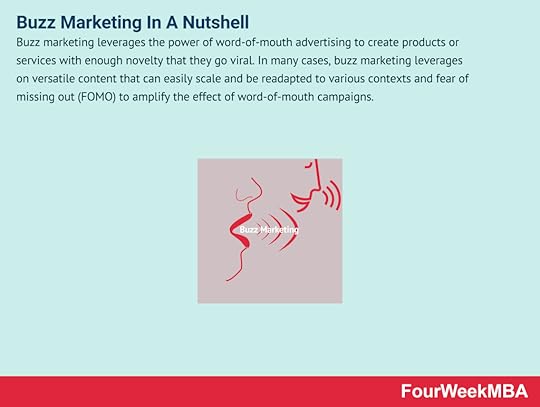 Buzz marketing leverages the power of word-of-mouth advertising to create products or services with enough novelty that they go viral. In many cases, buzz marketing leverages on versatile content that can easily scale and be readapted to various contexts and fear of missing out (FOMO) to amplify the effect of word-of-mouth campaigns.
Buzz marketing leverages the power of word-of-mouth advertising to create products or services with enough novelty that they go viral. In many cases, buzz marketing leverages on versatile content that can easily scale and be readapted to various contexts and fear of missing out (FOMO) to amplify the effect of word-of-mouth campaigns.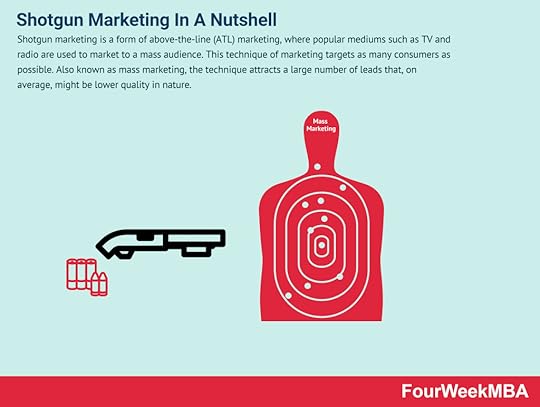 Shotgun marketing is a form of above-the-line (ATL) marketing, where popular mediums such as TV and radio are used to market to a mass audience. This technique of marketing targets as many consumers as possible. Also known as mass marketing, the technique attracts a large number of leads that, on average, might be of lower quality in nature.
Shotgun marketing is a form of above-the-line (ATL) marketing, where popular mediums such as TV and radio are used to market to a mass audience. This technique of marketing targets as many consumers as possible. Also known as mass marketing, the technique attracts a large number of leads that, on average, might be of lower quality in nature.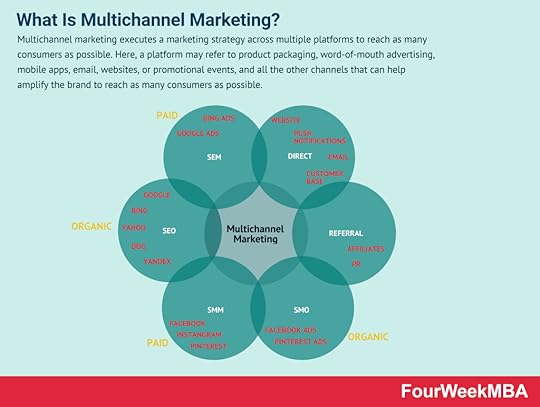 Multichannel marketing executes a marketing strategy across multiple platforms to reach as many consumers as possible. Here, a platform may refer to product packaging, word-of-mouth advertising, mobile apps, email, websites, or promotional events, and all the other channels that can help amplify the brand to reach as many consumers as possible.
Multichannel marketing executes a marketing strategy across multiple platforms to reach as many consumers as possible. Here, a platform may refer to product packaging, word-of-mouth advertising, mobile apps, email, websites, or promotional events, and all the other channels that can help amplify the brand to reach as many consumers as possible.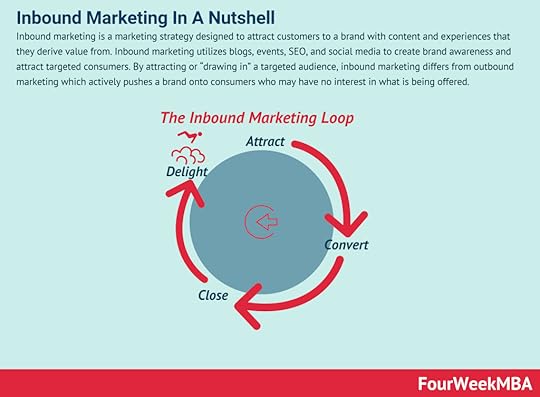 Inbound marketing is a marketing strategy designed to attract customers to a brand with content and experiences that they derive value from. Inbound marketing utilizes blogs, events, SEO, and social media to create brand awareness and attract targeted consumers. By attracting or “drawing in” a targeted audience, inbound marketing differs from outbound marketing which actively pushes a brand onto consumers who may have no interest in what is being offered.
Inbound marketing is a marketing strategy designed to attract customers to a brand with content and experiences that they derive value from. Inbound marketing utilizes blogs, events, SEO, and social media to create brand awareness and attract targeted consumers. By attracting or “drawing in” a targeted audience, inbound marketing differs from outbound marketing which actively pushes a brand onto consumers who may have no interest in what is being offered. With partnership marketing, two or more companies team up to create marketing campaigns that help them grow organically with a mutual agreement, thus making it possible to reach shared business goals. Partnership marketing leverages time and resources of partners that help them expand their market.
With partnership marketing, two or more companies team up to create marketing campaigns that help them grow organically with a mutual agreement, thus making it possible to reach shared business goals. Partnership marketing leverages time and resources of partners that help them expand their market.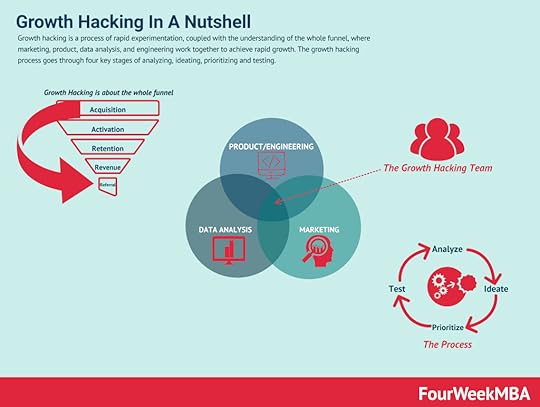 Growth marketing is a process of rapid experimentation, which in a way has to be “scientific” by keeping in mind that it is used by startups to grow, quickly. Thus, the “scientific” here is not meant in the academic sense. Growth marketing is expected to unlock growth, quickly and with an often limited budget.
Growth marketing is a process of rapid experimentation, which in a way has to be “scientific” by keeping in mind that it is used by startups to grow, quickly. Thus, the “scientific” here is not meant in the academic sense. Growth marketing is expected to unlock growth, quickly and with an often limited budget.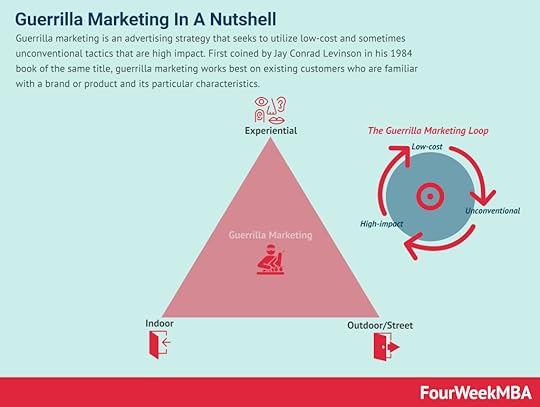 Guerrilla marketing is an advertising strategy that seeks to utilize low-cost and sometimes unconventional tactics that are high impact. First coined by Jay Conrad Levinson in his 1984 book of the same title, guerrilla marketing works best on existing customers who are familiar with a brand or product and its particular characteristics.
Guerrilla marketing is an advertising strategy that seeks to utilize low-cost and sometimes unconventional tactics that are high impact. First coined by Jay Conrad Levinson in his 1984 book of the same title, guerrilla marketing works best on existing customers who are familiar with a brand or product and its particular characteristics.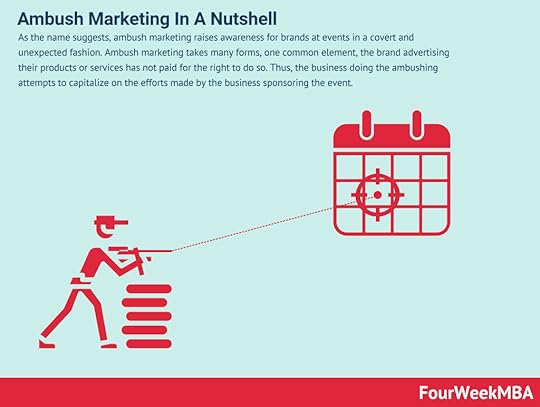 As the name suggests, ambush marketing raises awareness for brands at events in a covert and unexpected fashion. Ambush marketing takes many forms, one common element, the brand advertising their products or services has not paid for the right to do so. Thus, the business doing the ambushing attempts to capitalize on the efforts made by the business sponsoring the event.
As the name suggests, ambush marketing raises awareness for brands at events in a covert and unexpected fashion. Ambush marketing takes many forms, one common element, the brand advertising their products or services has not paid for the right to do so. Thus, the business doing the ambushing attempts to capitalize on the efforts made by the business sponsoring the event. Relationship marketing involves businesses and their brands forming long-term relationships with customers. The focus of relationship marketing is to increase customer loyalty and engagement through high-quality products and services. It differs from short-term processes focused solely on customer acquisition and individual sales.
Relationship marketing involves businesses and their brands forming long-term relationships with customers. The focus of relationship marketing is to increase customer loyalty and engagement through high-quality products and services. It differs from short-term processes focused solely on customer acquisition and individual sales.Main Free Guides:
Business ModelsBusiness CompetitionBusiness StrategyBusiness DevelopmentDigital Business ModelsDistribution ChannelsMarketing StrategyPlatform Business ModelsRevenue ModelsTech Business ModelsBlockchain Business Models FrameworkThe post What Is Micromarketing? Micromarketing In A Nutshell appeared first on FourWeekMBA.



